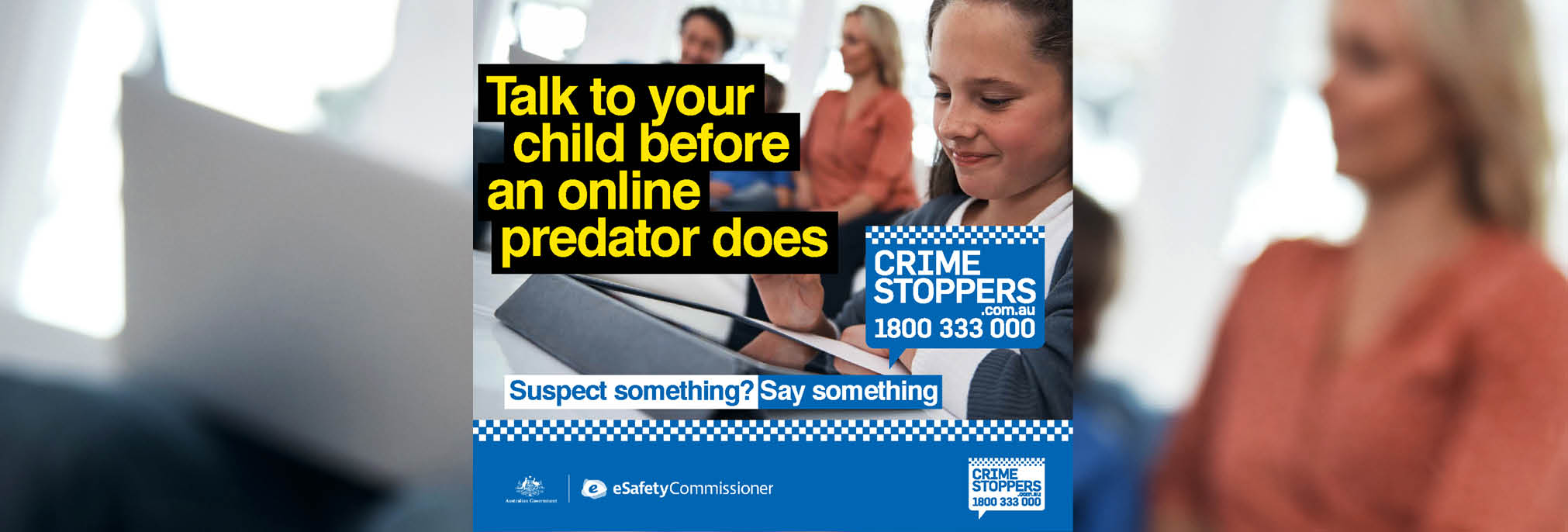Children’s eSafety
Keep your children safe as they spend significant time online for school, socialising and entertainment.
Keep your children safe as they spend significant time online for school, socialising and entertainment.

We hope parents and caregivers become more aware of the dangers facing children online, better monitor their online activities, and take time to talk to them about how to spend time safely online.
Everyone has a role to play in combatting predatory behaviour online and putting an end to unwanted and harmful contact from strangers.
Crime Stoppers jurisdictions right across Australia are getting behind this campaign. They will be featuring information and fact sheets on their websites, promote greater awareness of this initiative through the hundreds of thousands of social media followers, and get out into the community at grass-roots levels to reinforce what people should be on the lookout for.
Child sexual abuse material consists of images, videos and live streamed footage that shows the sexual abuse or sexual exploitation of children.
The content can range from children posing in sexually suggestive ways through to ‘contact’ offences involving direct sexual assault. In such cases, the predator is generally known to the child.
However, an increasing number of cases investigated by police involve the sexual exploitation of children online by a stranger.
Child sexual abuse material is obtained and shared in several ways:A predator records the sexual abuse of a child then uploads or shares it online.
A predator contacts a child through an app or service on a connected device and tricks or coerces them into producing and sending sexually explicit images and videos of themselves.
A predator shares images or videos of children ‘stolen’ from social media accounts.
The trade in child sexual abuse material online is global and abhorrent. Every time an image or video of a child being abused is shared or distributed, demand is fostered for new and more extreme material.
Children are accessing the internet through multiple devices – both at home and at school-which provides valuable educational and social benefits, but can also result in issues such as cyberbullying, inappropriate sharing of images or even grooming by online predators.
In February we saw the Australian Institute of Criminology reveal that financial records showed that more than 250 Australians spent more than $1.3 million to watch child sexual abuse, live streamed on the internet from the Philippines, over 13 years.
While the majority were aged in their 50s and 60s, more than half had no criminal record and were from a range of occupations that included aged care workers, gardeners and even a housewife.
If you know or suspect someone is producing, downloading or sharing child sexual abuse material you can report what you know to Crime Stoppers online or Ph 1800 333 000.
You don’t have to provide any personal details if you choose not to.